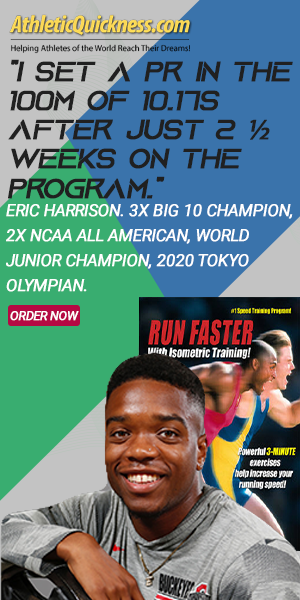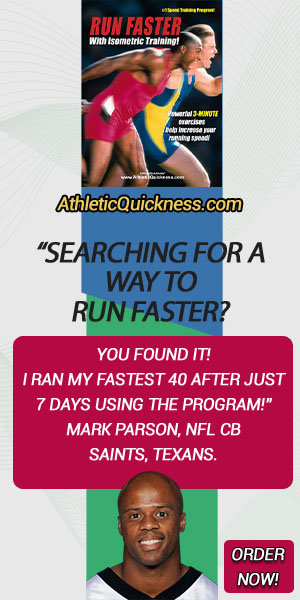A Letter to Football Coaches About Your Disappointing 40 Yard Dash Times
Are You the Problem?
Dear Football Coach,
Your offensive and defensive teams are just minutes away from improving their team speed in the 40-yard dash time by a minimum of 1.1 seconds!! What’s holding them back? Is it you?
Recently, a coach commented on our hip flexor exercise video with the following:
“Okay, how is it that the hip flexors are that important?!”
“You’re propelled forward by pushing down against the ground. Though you need to get your other leg up quickly, it isn’t against resistance, so it seems pretty odd that adding strength to those muscles would have much (any?) of an effect.”
Throughout all of our videos, we get a lot of interesting questions from a lot of interesting people, as you might imagine.
But this question from a coach really hit home at just how behind the times many of today’s high school coaches, college coaches and even professional coaches are when it comes to sprint training and getting their athletes to become faster.
You would think that with the amount of information readily available on the internet and with how fast information flies through social media outlets, it would be just a matter of time where everyone gets ‘up to speed’ on certain topics; and, in the world of sports, none rivals the topic of how to get faster.
Whether or not one wants to “believe” that our hip flexor exercise improves running speed or not (all they really need to do is try it for a few minutes to find out….), to receive a question from a coach who has doubts about the importance of the hip flexors and the stride as they relate to running is not as uncommon as you might think.
This coach’s experience about running a faster 40, as with a lot of other coaches, too, seems to be based solely on the premise that the harder you push down on the ground, the faster you will be able to run.
While pushing down on the ground hard does help your running speed, there is so much more that needs to be considered regarding sprint training.
Before you or anyone else just casually dismisses the role of the hip flexors in the sprinting process, you really owe it to yourself to continue to ‘look under as many stones’ as possible if you are not getting the results you desire.
It’s also been my experience with coaches that so many of them, especially football coaches, cry foul and make excuses when they don’t get the recruits they desired and have to settle for a class that isn’t as highly coveted as they had hoped.
What kind of message does that send to the players that are on the team? Sure some coaches are more tactful than others regarding this issue, but the feelings are there nonetheless.
Losing out on a recruit that runs a 4.4 forty and settling for one that runs a 4.6 isn’t the end of the world. In fact coach, you are already sitting on a gold mine of running speed potential within every athlete that suits up for you, but it’s up to you to mine that talent, and this is where I know unequivocally that I can help you.
You see, it’s to your advantage to look a little further than our coach who commented on my video and moved on.
And, it may help if I told you that our “little hip flexor exercise” just so happened to be the one that the high school 60 meter national sprint champion credited for his success a few years back and who also recently placed in the top five in the 2012 NCAA Outdoor Track and Field Championships in Des Moines, Iowa.
Still need a little more convincing?
Think about it this way: If you have 11 guys on the offensive side of the ball, and each one improves their 40 yard dash time by 0.1 seconds, collectively the team has just become 1.1 seconds faster.
This is a huge improvement, and one that is so easy to accomplish. This doesn’t even take into consideration the athletes who post better results of .2 and .3 second drops.
I would be willing to bet that any coach who puts our hip flexor exercise to the test and follows all of the instructions would not only see an immediate improvement in their won/loss record, but will also see an immediate improvement in team compliance, team chemistry, team confidence and team spirit.
Plus, as an added incentive, I will personally give the next 10 coaches who contact me a one-on-one coaching session via telephone on all of my sprint training methods.
Always glad to help!
Dr. Larry Van Such






